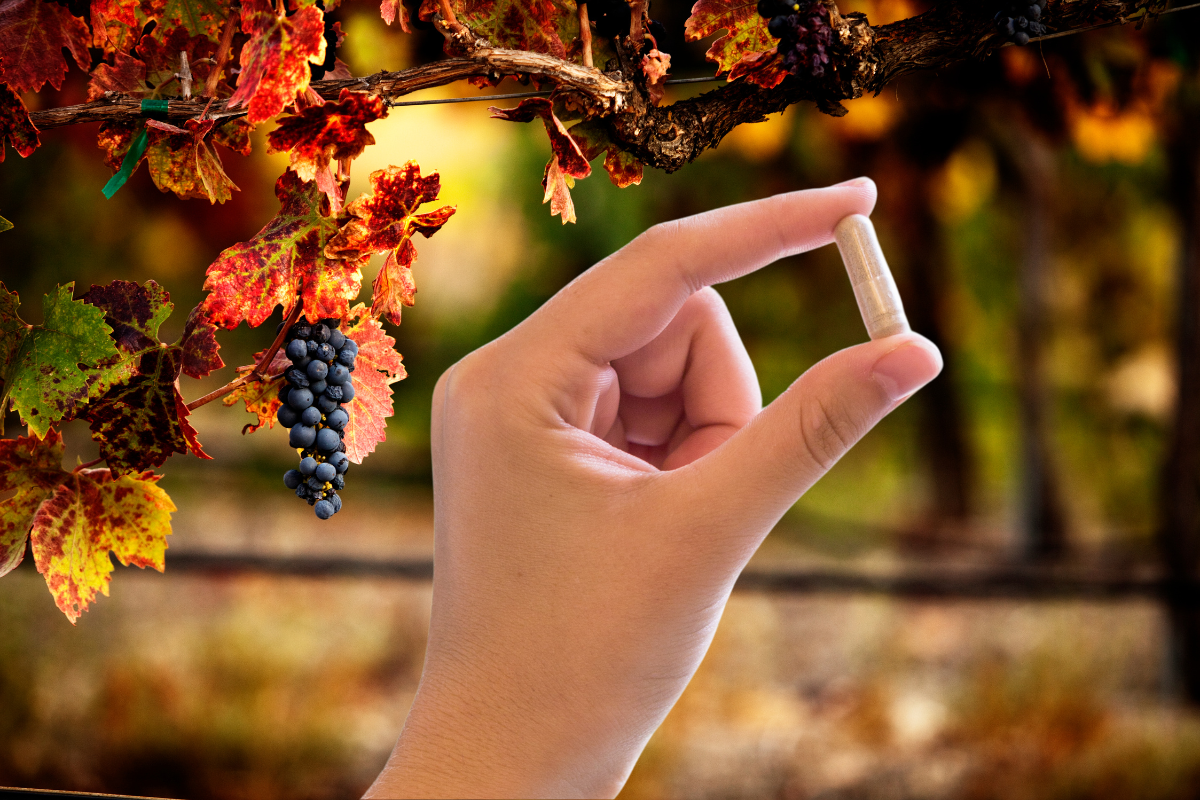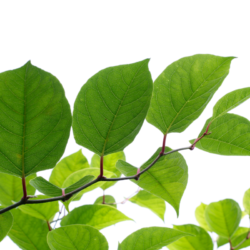The red vine(Vitis vinifera L.), a member of the Vitaceae family, is a plant widely cultivated throughout the world, mainly for the production of wine and table grapes. However, in addition to its major economic role in the wine industry, the red vine has attracted growing interest for its therapeutic and medicinal properties. Red vine leaves contain a concentration of phenolic compounds, particularly flavonoids and anthocyanins, which are recognised for their antioxidant, anti-inflammatory and venotonic effects. Phytotherapy has long used these bioactive compounds to treat venous circulation disorders, particularly chronic venous insufficiency, characterised by poor blood circulation in the legs.
Presentation and origin
Vitis vinifera, commonly known as the cultivated vine, belongs to the Vitaceae family and originates from temperate regions of the Old World, stretching from south-eastern Europe to central Asia. Today, it is grown on every continent except Antarctica. This climbing plant uses tendrils to cling to its supports, and its stems can grow up to six metres long. The vine is mainly grown for its fruit in bunches, the grape, which can be eaten fresh, dried or fermented to produce wine.
Mainly known for producing wine and table grapes, it is also used in phytotherapy for its benefits for blood circulation. It is distinguished by its deciduous leaves and clusters of berries, the colour of which varies according to the variety. In phytotherapy, red vine is used for its astringent and anti-inflammatory properties, mainly due to the presence ofanthocyanins and flavonoids. These compounds improve venous tone and are used to treat circulatory disorders such as varicose veins, haemorrhoids and rosacea.
Composition and properties of red vine as a medicinal plant
Used for centuries in phytotherapy, red vine is appreciated for its beneficial effects on blood circulation and protection of the vascular system. Its properties are mainly linked to its richness in bioactive compounds, which give it antioxidant, veinotonic and anti-inflammatory properties. Let’s find out more about the elements that make up this plant and their impact on health.
What compounds does red vine contain?
Red vine leaves and seeds contain a high concentration of phenolic compounds, in particular flavonoids, anthocyanins and tannins, which give it venotonic and antioxidant properties. These substances protect the capillaries and veins, improving blood circulation and reducing oedema.
Red grape skins are also particularly rich in resveratrol, an antioxidant known for its protective effects on the cardiovascular system and its role in preventing cell ageing.
Oligo-proanthocyanidins (OPCs), present in the seeds, also help to protect cells against oxidation and are being studied for their impact on cardiovascular health. Red vine and its bioactive components therefore offer a wide range of therapeutic applications, particularly in phytotherapy, to strengthen the vascular system and improve blood circulation.
What are the therapeutic properties of red vine?
Red vine has protective and stimulating effects on small blood vessels, effectively reducing oedema. The European Medicines Agency recognises the well-established use of its leaves in the treatment of chronic venous insufficiency, characterised by symptoms such as varicose veins, the sensation of heavy legs, fatigue, cramps and itching. In addition, red vine leaves are traditionally used to relieve haemorrhoids and thus treat capillary fragility.
The leaves, rich in anthocyanosides and flavonoids (quercetin, kaempferol), have properties similar to those of vitamin P, strengthening blood vessel walls and reducing swelling. Animal studies have shown that red vine extracts strengthen the collagen fibres in capillaries, improving their resistance.
Red vine grape seeds contain oligo-proanthocyanidins (OPCs), which have antioxidant properties and protect cells against oxidation. Studies of these compounds have shown their value in preventing cardiovascular disease and reducing post-operative oedema.
The skin of red grapes is rich in resveratrol, a powerful antioxidant and anti-inflammatory. This compound is used to prevent metabolic diseases and age-related disorders. Red vine-based products, in various galenic forms, are effective in treating venous and capillary circulatory disorders.
How should it be used?
Red vine is used in a variety of forms in phytotherapy, including herbal teas, solid preparations for oral use, and semi-solid creams for use on the skin. The recommended dosage for an adult is between 360 and 720 mg of dry extract taken orally, for a recommended period of 12 weeks.
Use and administration
In phytotherapy, red vine is consumed in various forms:
- Herbal tea: infusion of 5 to 10 g of dried leaves in 250 ml of water, twice a day.
- As a cream: apply a soft extract locally, one to three times a day. Apply a thin layer to the affected area, one to three times a day.
- In capsules or dried extracts: dose of 270 to 720 mg per day as required.
The first effects generally appear after 4 weeks’ treatment, and a course of treatment can last up to 12 weeks. For the treatment of haemorrhoids or capillary fragility, the same herbal tea and dry extract are used, with a recommended treatment period of one week.
Precautions and contraindications
Red vine leaves have one main contraindication: hypersensitivity to the active substance. The use of red vine is also not recommended for children, pregnant and breast-feeding women, due to a lack of sufficient safety data. Some side effects, such as digestive problems, headaches or skin reactions (itching, hives or erythema), can sometimes occur.
As proanthocyanidins can interact with anticoagulants, their association with certain drugs and plants with similar effects (garlic, ginseng or warfarin) should be avoided. In addition, stop taking them 15 days before surgery to prevent any risk of bleeding.
The resveratrol present in red grapevine has hormonal properties, so people with a history of hormone-dependent cancer are advised to avoid this plant. What’s more, applying red vine to damaged skin is risky and requires medical consultation in the event of serious problems such as thrombophlebitis, intense pain or leg ulcers.
Conclusion
Thanks to its rich antioxidant and flavonoid content, red vine is an effective natural remedy for improving blood circulation and protecting the vascular system. Used in the form of herbal teas, extracts or creams, it offers a natural solution for relieving venous disorders while providing cardiovascular support. However, its use must be carefully monitored, taking into account possible contraindications and drug interactions.
Source:
- https://www.vidal.fr/parapharmacie/phytotherapie-plantes/vigne-rouge-vitis-vinifera-tinctoria.html
- https://www.vidal.fr/maladies/coeur-circulation-veines/jambes-lourdes/phytotherapie-plantes.html





